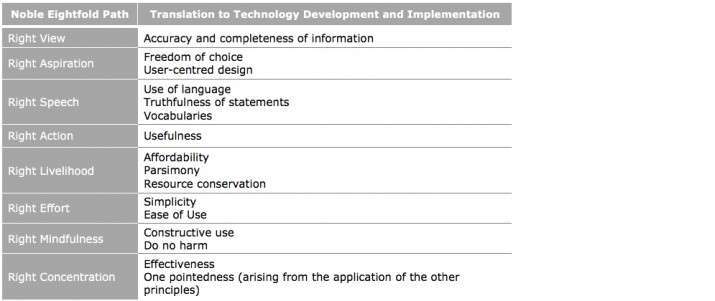
These days we hear more and more about “McMindfulness,” an expression sometimes used to refer to the commodification of the Dharma.* Mindfulness as a concept is difficult enough to grasp (and practice). Since McMindfulness presents itself under a subtle camouflage of non-mindfulness as mindfulness, what it is precisely may be even more difficult to identify.**
Thanks to growing attention from social and mainstream media platforms, McMindfulness is becoming better understood and more easily identifiable. As David Forbes writes, “McMindfulness occurs when mindfulness is used, with intention or unwittingly, for self-serving and ego-enhancing purposes.” He goes on to note that according the sharp McMindfulness critics Ronald Purser and David Loy, “Mindfulness, needs to reclaim an ethical framework that goes beyond privatized adjustment to a society based on market capitalism that contributes to stress and other sources of unhappiness.” (The Guardian)
This McMindfulness effect is not unique to Buddhism. It is clearly visible in other spheres of human activity where good intentions wind up being misappropriated, diluted, poorly copied, trivialized, and even distorted through commercialization. In the process of commercialization we find genuine, original concepts becoming serialized and turned into inexpensive off-the-shelf consumer goods or outright manipulated into completely new things for easy consumption. I refer to this phenomenon as “systemic deviation,” wherein systems designed for ethical purposes are used unethically.
The good news is that the more that people hear about mindfulness and take an interest, the more that people can potentially benefit from it. The bad news is that what is available to them through serialization is often a surrogate—not of the real thing—with the risk that it can be used against its original purpose.
“The authors [Purser and Loy] argued that a ‘stripped down, secular technique’ of mindfulness originating in Buddhism not just fails to serve to awaken people and organizations from the unwholesome roots of greed, ill will, and delusion, it is refashioned into a banal, therapeutic, self-help technique that can actually reinforce those roots,” explains the recent well-argued article by David Forbes.
Forbes continues: “McMindfulness aims to reduce the stress of the private individual and does not admit to any interest in the social causes of stress. In corporations, ‘mindfulness training has wide appeal because it has become a trendy method for subduing employee unrest, promoting a tacit acceptance of the status quo, and as an instrumental tool for keeping attention focused on institutional goals.’” (The Guardian)
McMindfulness has also taken over big business with “Mindful Technology:” gadgets and applications available to purchase or download to make one calmer, sharper, and more successful at work and in life.


The Dharma principles of the Noble Eightfold Path are listed on the left, while the technology principles are on the right.
From these common principles, we can derive a set of criteria that can help designers and users evaluate mindful technology to determine whether they are really mindful. Does the technology really embrace the principles of the Noble Path, or is it misleading? This is also a good opportunity to brush up on the application of the Noble Path in the real sense of the term.
Let’s take it from the top. What does mindfulness mean, really? It’s okay to want to be calm and get a better feel of one’s own pulse, but mindfulness really is about others, isn’t it? Does the technology support concern for others as well as for the environment, in addition to one’s own mental and physical condition?
In developing empathy and concern for others, does the technology optimize the use of the platform’s technical capability and at the same time respect the user’s right to privacy? Does it benefit sentient beings in general? True, when each of us is less stressed, the whole world automatically becomes a better place. Nevertheless, it is important that the target of our mindfulness is not purely self-serving.
How does the technology in question make the world a better place? How does it affect the planet? Expanding the mind and embracing the universal awareness should not come at the expense of the environment. Enabling and supporting resource conservation is essential to mindfulness. Inevitably a mindful technology will have to rely on renewable energy or, even better, produce surplus renewable resources—for example, self-recharging gadgets with an extra USB port to enable others to plug in. That is something I would call mindful.
Do the mindful gadgets make users wiser? Does the technology help users to distinguish fact from gossip, or to verify the truth of a statement? Does it help one to anticipate the consequences of a user’s actions and calculate the risks and costs of potentially irresponsible use? Ultimately, all intelligent autonomous system functions should be driven by mindfulness in the sense of supporting informed choices and decisions, rather than exploiting users’ psychological weaknesses such as maximizing addictive habits.
This column, Mindful Technology, is interested in receiving additional discriminating suggestions from readers as well as feedback from technology users with their own experiences.
Business and technology, if steered away from ignorance and greed and made to serve the greater good supported by adherence to the authentic principles of the Dharma have immense power to lead humanity away from the endless suffering caused by ignorance. Contemporary technology may be seen as a type of vehicle itself, a new form of –yana. The ultimate test for mindful technologies is whether, after becoming more mindful while using them, we can maintain that mindfulness while discarding the technology itself.
I hope that mindful technology investors and producers, as well as tech companies and consumers can understand this power and seriously leverage it through ethical design and consumer choices.
* Mindfulness Continues to Rise in the West, but not Without Critics (Buddhistdoor Global)
** McMindfulness The Marketing of Well-Being (Psychology Today)
See more
How capitalism captured the mindfulness industry (The Guardian)















Masum
[…]we like to honor quite a few other web internet sites around the internet, even when they arent linked to us, by linking to them. Under are some webpages really worth checking out[…]